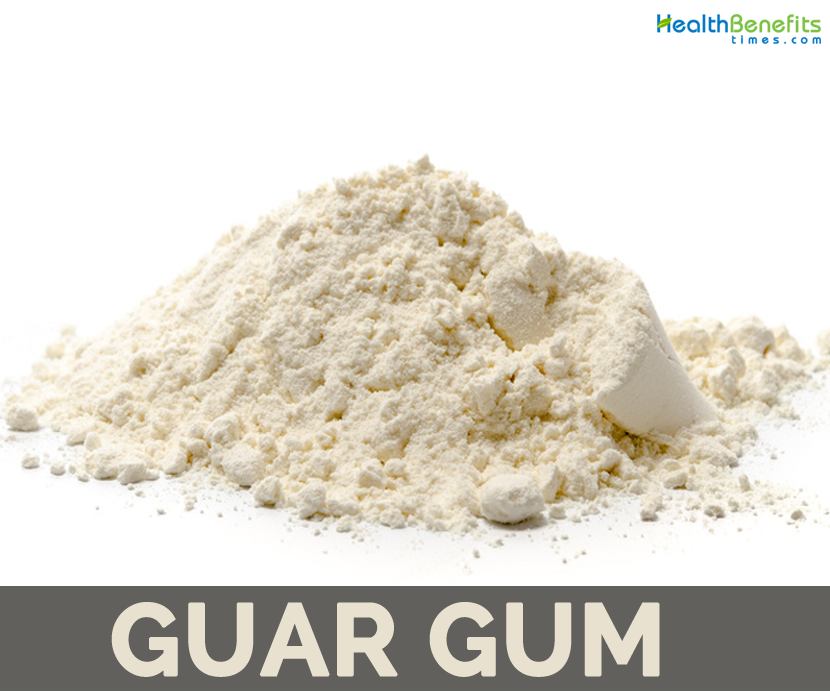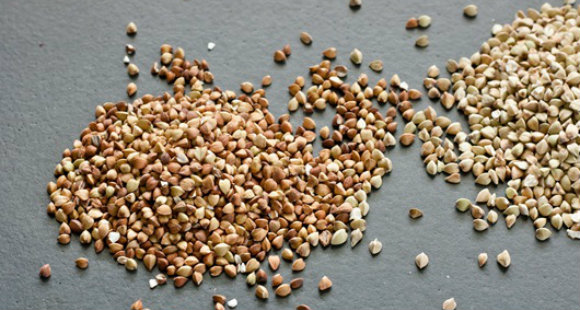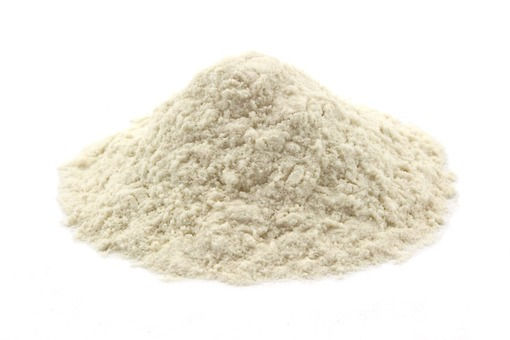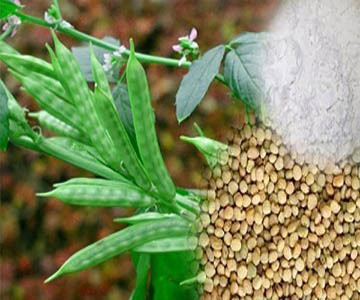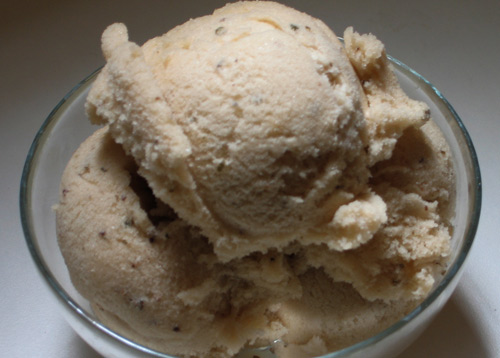It is a common ingredient in both processed foods and gluten-free baking. It can also be found in dairy products, condiments and baked goods. It’s also used as an additive in non-food products as well. It is sold in powdered form as a thickener and binder for baking and cooking and is often used in gluten-free recipes. Whether you choose to use it in cooking or take it as a supplement, guar gum can help you lower your cholesterol, manage your blood sugar and improve digestive health. It can also help balance ‘good’ bacteria in your system and may be useful as an add-on treatment. Though it has been linked to multiple health benefits, it has also been associated with negative side effects and even banned for use in some products.
Guar Gum History and Interesting Facts
The guar Gum plant is historically cultivated in India and Pakistan for many centuries. It is now also cultivated in countries of the southern hemisphere, primarily in the semi-arid areas of Brazil, Australia, and South Africa. It is also done in the southern zones of United States, in Texas and Arizona.
Health benefits of Guar Gum
Guar gum is well known for its ability to thicken and stabilize food products, but it may also provide some health benefits. Studies indicate that it could be beneficial for a few specific areas of health, including digestive health, blood sugar, blood cholesterol and weight maintenance. Listed below are some of the popular health benefits of using Guar gum
1. Digestive Health
Since Guar gum is high in fiber, it may support the health of your digestive system. Research has discovered that it helped relieve constipation by speeding up movement through the intestinal tract. Guar gum consumption was also related with improvements in stool texture and bowel movement frequency. Additionally, it may act as a prebiotic by promoting the growth of good bacteria and reducing the growth of harmful bacteria in the gut.
In a research, 60 participants with constipation were given a supplement containing guar gum. They experienced a significant decrease in concentrations of harmful bacteria in their digestive tracts. Thanks to its ability to promote digestive health, it may also aid in the treatment of irritable bowel syndrome (IBS). (1), (2), (3)
2. Blood Cholesterol
Soluble fibers found abundantly in guar gum have been shown to have a cholesterol-lowering effect. Fiber helps to binds bile acids in your body, causing them to be excreted and reducing the amount of bile acids in circulation. This forces the liver to use up cholesterol to produce more bile acids, leading to a decrease in cholesterol levels.
Research with 19 obese people with diabetes take a daily supplement containing 15 grams of guar gum. They found that it led to lower levels of total blood cholesterol, as well as lower LDL cholesterol, compared to a placebo. An animal research found similar results, showing that rats fed guar gum had reduced blood cholesterol levels, in addition to increased levels of HDL cholesterol. (4), (5), (6)
3. Blood Sugar
Several researches have shown that guar gum may be effective at lowering blood sugar. This is because it is a type of soluble fiber, which can slow the absorption of sugar and lead to a reduction in blood sugar levels.
In one research, people with diabetes were given guar gum four times per day over a six-week period. Research discovered that guar gum led to a significant decrease in blood sugar and a 20% drop in LDL cholesterol. Another research had similar findings, showing that consuming guar gum considerably improved blood sugar control in 11 participants with type 2 diabetes.(7), (8), (9)
4. Weight Maintenance
Some researchers have found that guar gum could help with weight loss and appetite control. In general, fiber moves through the body undigested and may help promote satiety while reducing appetite.
One study showed that eating an additional 14 grams of fiber per day may lead to a 10% decrease in calories consumed. Guar gum, in particular, may be effective at reducing appetite and decreasing calorie intake.
Evaluation of three studies concluded that guar gum improved satiety and reduced the number of calories consumed from snacking throughout the day. Another study found that 15 grams of guar gum per day helped women lose 5.5 pounds (2.5 kg) more than those who took a placebo.(10), (11), (12), (13)
5. Control of High Blood Pressure
Consumption of guar gum with each meal can be helpful to individuals with high blood pressure. According to WebMD, guar gum works by lowering the high blood pressure in individuals with hypertension. However, its effectiveness is lower compared to psyllium husks.
6. Prevention of Diarrhea Arising From Chemotherapy
Guar gum is capable of preventing diarrhea that occurs as a side effect of chemotherapy. However, there is inadequate evidence to these claims. More research is necessary to rate the effectiveness of guar gum in the management of diarrhea that is related with cancer treatment.
Traditional Uses and benefits of Guar Gum
- Guar gum can decrease the effectiveness of some birth control pills, antibiotics and diabetes medications.
- Guar meal is a great source of fiber.
- Guar gum reduces total cholesterol. It lowers triglycerides while increasing HDL Cholesterol (good cholesterol)
- Guar meal regularizes moisture content in stool, absorbing excess liquid in diarrhea, and softening the stool to reduce constipation.
- It alleviates blood sugar response to food this reduces digestive inflammation.
- Guar gum intake avoids excess gas formation in the colon.
- Guar gum also cleanses the intestinal system and keeps them functioning properly.
- Guar meal slows down the absorption of sugar in the small intestine hence is recommended for diabetic patients to prevent glucose ‘spikes’.
Manufacturing Process
As mentioned previously, the seeds are the important part of the plant. Each seed is dehusked, milled, and screened so that the gum is extracted. This is then dried until it looks like a pearly-white powder that people often mistake for as cornstarch.
Use of Guar Gum in Recipes
- Add a small amount of guar to homemade almond milk or other milk alternatives.
- When making sauce, marinade or dressing, especially if you’re trying to keep calories and fat content low, consider adding guar to help add a creamy-like texture. Guar gum is common in fat-reduced or fatless spreads because it replaces viscosity; however these tend to be highly processed, so it’s better to make your own.
- Guar can help form a smooth texture in homemade lotion, toothpaste or conditioner. For a creamier feel, add guar gum powder to homemade shampoo made with baking soda. Use about 1/8 teaspoon of pure guar gum for the entire recipe.
- Try guar in gluten-free recipes like gluten-free pancakes, muffins, and pizza crust or banana bread.
Recommended amount of guar gum for baked goods:
- Cookies: ¼ to ½ teaspoon per cup of flour
- Cakes and pancakes: ¾ teaspoon per cup of flour
- Muffins and quick breads: 3/4 teaspoon per cup of flour
- Breads: 1.5 to 2 teaspoons per cup of flour
- Pizza dough: 1 tablespoon per cup of flour
- For hot foods (gravies, stews , heated pudding): 1–3 teaspoons per one quart of liquid
- For cold foods (salad dressing, ice creams, pudding): about 1–2 teaspoons per quart of liquid
Different uses of Guar gum in household or beauty products:
- Adds texture, thickness and/or creaminess to foods like soups or stews. It can be useful to use at home, but avoid processed, canned soups filled with preservatives and sodium.
- Binds together ingredients in yogurt, ice cream and other dairy products. It does this by preventing oil droplets from separating, which is why it’s often found in products containing a source of fat.
- Prevents solid particles in dressings, marinades or other mixtures from separating and settling.
- Keeps ingredients found in plant-based milks (flax, almond, coconut, soy or hemp) from clotting or separating.
- May help slow down absorption of glucose (sugar) when consumed with a meal.
- Thickens hair-cleansing products like shampoo or conditioner. Also keeps the texture of lotions from changing by holding oils in place.
- Forms a gel-like consistency in products that are used on the hair or the body.
- Adds thickness to toothpastes.
- Adds bulk to laxatives and might help treat constipation.
- Helps keep ingredients in medications or supplements bound and free from separating.
Interesting Facts
Today, guar beans are grown all over the world for food, household or industrial manufacturing applications, primarily in countries like India, the U.S., Australia and parts of Africa. India alone produces about 80 percent of the world’ supply of guar gum.
Some of the most important uses for guar gum globally are in the mining, textile, explosives and paper-manufacturing industries. Guar activation has been found to lead to beneficial changes in chemical properties, including decreased hydrogen bonding, increased solubility in water-alcohol mixture and improved electrolyte compatibility. These applications help form and solidify products, while preventing temperature changes, leakage or fluid loss. Guar has become very important in hydraulic fracturing, since due to its dispersibility in water and mineral oil it can push fluid up through solid rock to the Earth’s surface.
Other Facts
- It is also used in paper manufacturing, textiles, printing, cosmetics and pharmaceuticals.
- Guar gum decreases crystal formation in frozen foods and hence extends shelf life of products such as ice creams.
- Guar gum is used as moisture preservation agent in dough and slows down fat penetration in baked foods.
- It functions as a binder in meat and meat products.
- Guar gum derivatives are used as thickeners and stabilizers in canned soup.
- Guar gum is also used to provide uniform mixtures in dairy products such as chocolate milk and flavored milks.
- Guar gum reduces calories and provides viscosity control in beverages.
- It also acts as binder in sauces and salad dressings.
- Guar gum also helps add taste to foods.
Precautions
- Common side effects of guar gum include bowel concerns such as diarrhea, loose stools and gassiness.
- Consuming large amounts of guar gum causes serious problems, including obstruction of the esophagus and small bowel and, in some cases, even death.
- If you have an allergy to soy products, you may also want to consider limiting your intake of guar gum.
- It may also cause digestive symptoms, including gas and bloating.
- Guar gum supplements are not recommended for pregnant women, persons who are just about to undergo a medical procedure or people with difficulty in swallowing.
- It has also been shown that consumption of diet pills with a high amount of guar gum could lead to adverse reactions such as choking, constipation, or obstruction of the intestines.
- Guar gum can lower your blood pressure, which can be hazardous for anyone who has pre-existing low blood pressure.
Comments
| Guar Gum Quick Facts | |
|---|---|
| Name: | Guar Gum |
| Origin | India, Australia, US, China, Pakistan, and South Africa (Plant) |
| Colors | White to yellowish-white color |
| Shapes | Powdered form |
| Taste | Tasteless |
| Calories | 94 Kcal./cup |
| Major nutrients | Total dietary Fiber (57.63%) Carbohydrate (16.85%) Calcium (8.30%) Protein (2.60%) Sodium (2.33%) |
| Health benefits | Digestive Health, Blood Cholesterol, Blood Sugar, Weight Maintenance, Control of High Blood Pressure, Prevention of Diarrhea Arising From Chemotherapy |
| Name | Guar Gum |
|---|---|
| Scientific Name | Cyanaposis tetragonolobus (Plant) |
| Native | India, Australia, US, China, Pakistan, and South Africa (Plant) |
| Common Names | Guaran, gellan gum, Goma Guar, Gomme de Guar, Gomme de Jaguar, Guar Flour, Indian Guar Plant, Jaguar Gum |
| Made By | Dehusking, milling and sorting the type of legume called the guar bean |
| PH range | 4.0 to 10.5 |
| Food Products Containing Guar Gum |
|
| Other Product containing Guar gum |
|
| Texture | Powdery |
| Color | Off White to yellowish-white color |
| Flavor/aroma | Odorless |
| Taste | Tasteless |
| Soluble In | Cold Water |
| Insoluble In | Oils, grease, hydrocarbons, ketones and esters |
| Available Forms | Capsules, flours, and granules |
| Storage | Airtight, moisture-proof container |
| Major Nutritions | Total dietary Fiber 21.9 g (57.63%) Carbohydrate 21.91 g (16.85%) Calcium, Ca 83 mg (8.30%) Protein 1.3 g (2.60%) Sodium, Na 35 mg (2.33%) Total Fat (lipid) 0.14 g (0.40%) |
| Calories in 1oz (28.35 gm) | 94 Kcal |
| Health Benefits |
|


